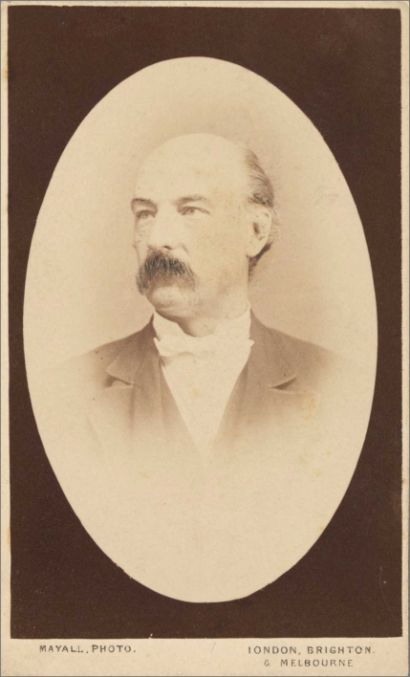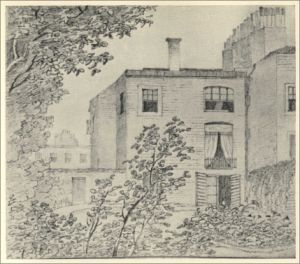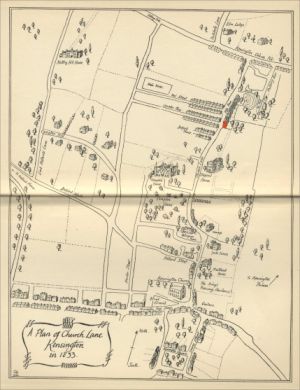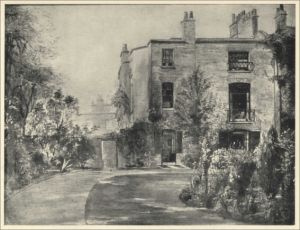Exhibition
Charles Edward HORSLEY (1822-1876)
December 2022
(b. London, 16 December 1822; d. New York, 28 February 1876)
Charles Edward Horsley, born on 16 December 1822, was one of the four children of William Horsley (1774-1858). William was successively organist of Ely Chapel, Holborn, the Belgrave Chapel, and the Charterhouse, and, in 1813, a founder-member of the Philharmonic Society. Today he is remembered principally for the hymn tune ‘Horsley’, published in his Twenty-Four Psalm Tunes (1844) and universally sung to the words ‘There is a green hill far away’, but during his lifetime he was best known as a composer of glees, publishing four volumes (1801-27), with a fifth issued posthumously. His elder son, J.C. Horsley, became an artist and, in 1843, is reputed to have designed the first Christmas card, while his daughter Mary married Isambard Kingdom Brunel; only his younger son, Charles, followed his father into the music profession.
Writing in the first edition of the Dictionary of Music and Musicians that bears his name, George Grove described Felix Mendelssohn Bartholdy as having been ‘for long looked upon as half an Englishman’ on account of his command of the language, his regular visits to this country and affection for it, and ‘his general high and unselfish character’. All won him friends, among them members of the Horsley family, resident in Kensington Church Street, then Church Lane, near the junction with Bayswater Road, the area known today as Notting Hill Gate, but then as ‘Kensington Gravel Pits’.
1. Drawing from memory by Mendelssohn in Fanny Horsley’s Album inscribed ‘1 High Row, Kensington Gravel Pits. Berlin. July 24th, 1832 Felix Mendelssohn Bartholdy’. 2. A Plan of Kensington in 1833 drawn by Cecilia Dunbar-Kilburn. 1 High Row is highlit in red. 3. 1 High Row, Kensington Gravel Pits, from an oil painting belonging to Mrs. Gerald Horsley [in 1934]. Inscribed ‘Begun (before the Painting Room was built) by J. C. Horsley and finished Septemer 1844 by Fanny Thompson for their friend Felix Mendelssohn Bartholdy.’
These two views of the back of 1 High Row, the Horsleys’ home, and the Plan of Church Lane, Kensington are from Mendelssohn and his Friends in Kensington – Letters from Fanny and Sophy Horsley written 1833-36. Edited by Rosamund Brunel Gotch. London, 1934.
After early instruction from his father and piano study with Moscheles (then living in London), Charles Horsley was, on Mendelssohn’s advice, sent to Kassel in 1839 for further study with Moritz Hauptmann. Two years later he returned to Leipzig where, under the general guidance of Mendelssohn, he concluded his musical education. Whilst in Germany he completed a number of substantial compositions, among them a Symphony in D minor and the first of two piano trios, and the flow of compositions continued after his return to London, with a second piano trio, violin concerto (1849) and, in 1850 and 1853, two oratorios, David and Joseph. Several of the chamber works were performed at the Society of British Musicians in London, while David was premiered by the Liverpool Philharmonic Society in November 1850 and repeated in March 1851.
C. E. Horsley: David, A Sacred Oratorio. First edition of the arrangement for piano, 4 hands, London, 1850.
It was heard in London at Exeter Hall in February 1851, when J.W. Davison, writing in The Times, reported that ‘We never saw a more enthusiastic audience’. He also sounded a note of warning:
“…it is a work of exceeding cleverness, containing many beautiful pieces, and evidencing a musical feeling of high refinement, but in a style and school directly tracable [sic.] to Mendelssohn. Perhaps, as Mr. Horsley grows older and writes more, he may throw off the trammels of his favourite model. We doubt it.”
Within twelve months The Liverpool Mercury announced that ‘a new oratorio, “Joseph,” is now being composed, and will shortly be produced at the Philharmonic-hall. It is from the pen of our fellow-countryman Charles Edward Horsley’. Joseph received its premiere on 31 May 1852 and was given in London by a new body, the Harmonic Union, in the following December. After spending some time in Liverpool, Horsley returned to London in 1853 as organist of St John’s, Notting Hill, and in 1860 was appointed to organise the music section of the 1862 International Exhibition. He had, meanwhile, decided to emigrate to Australia, which he did in 1863, subsequently working as organist of Christ Church, South Yarra, Melbourne, and as a choral and orchestral conductor. In 1872, he moved to New York, where he became organist of St John’s Chapel and Director of the Church Music Association. He died unexpectedly in February 1876 and his body was returned to London for burial in Kensal Green Cemetery alongside other members of his family.
1. C. E. Horsley: Thanksgiving Hymn with words by Lewis Minto Morrison. Liverpool, [1871]. 2. From The Musical World, 15 April 1876. 3. C. E. Horsley: March from ‘David’ arranged as a Choral March with words by Kate T. Sizer. London, [1904].
© Peter Horton, 2022
















